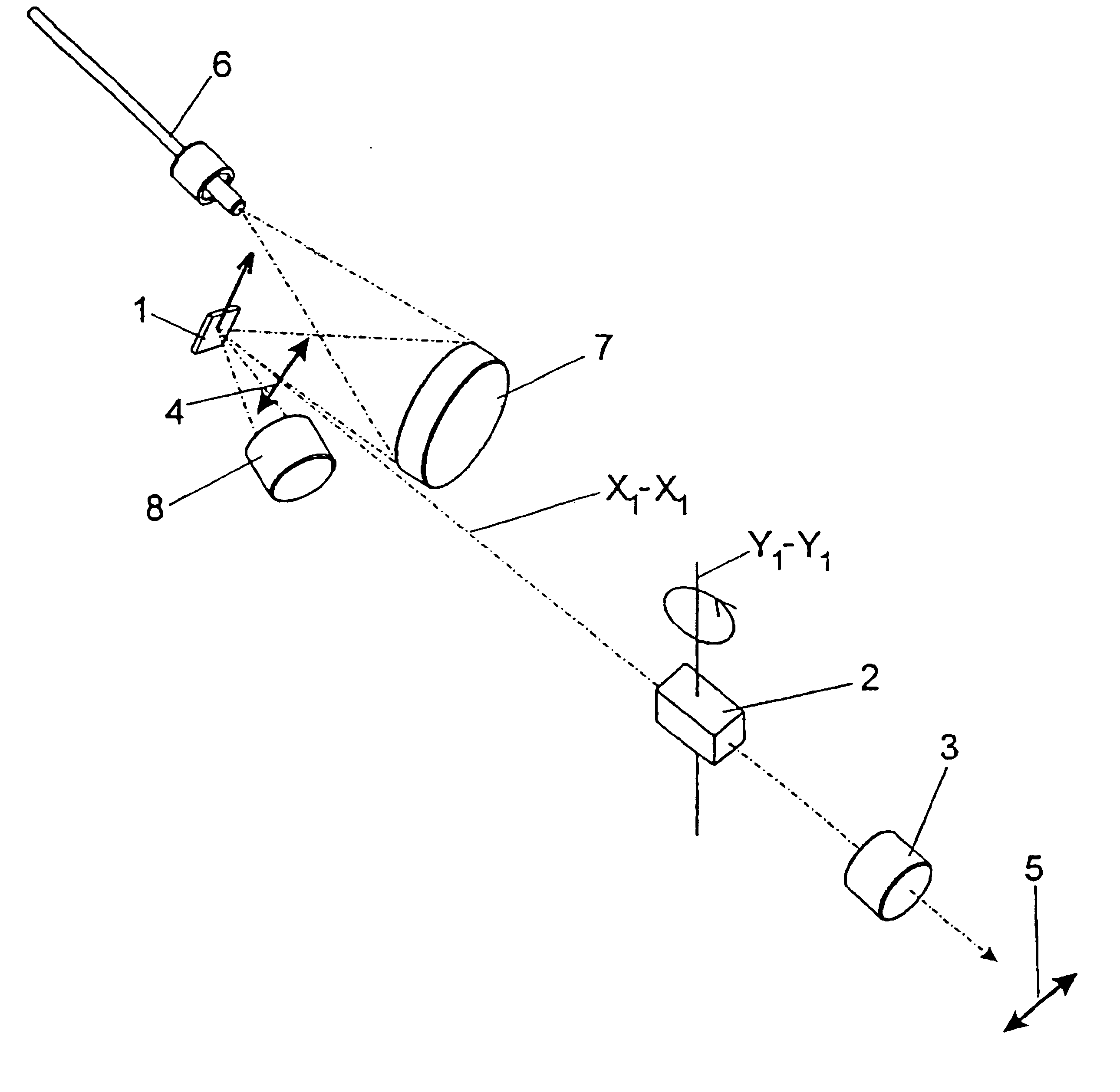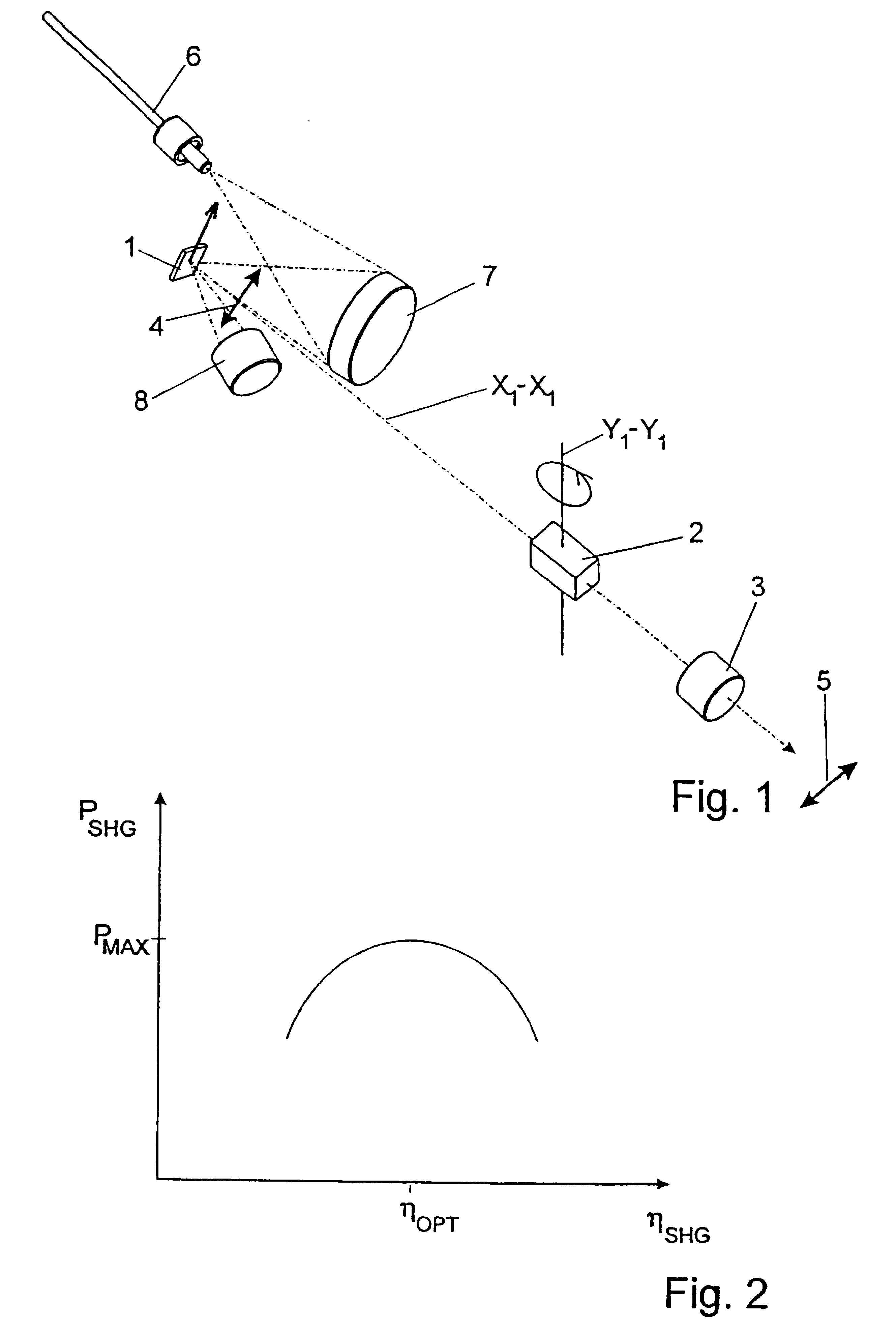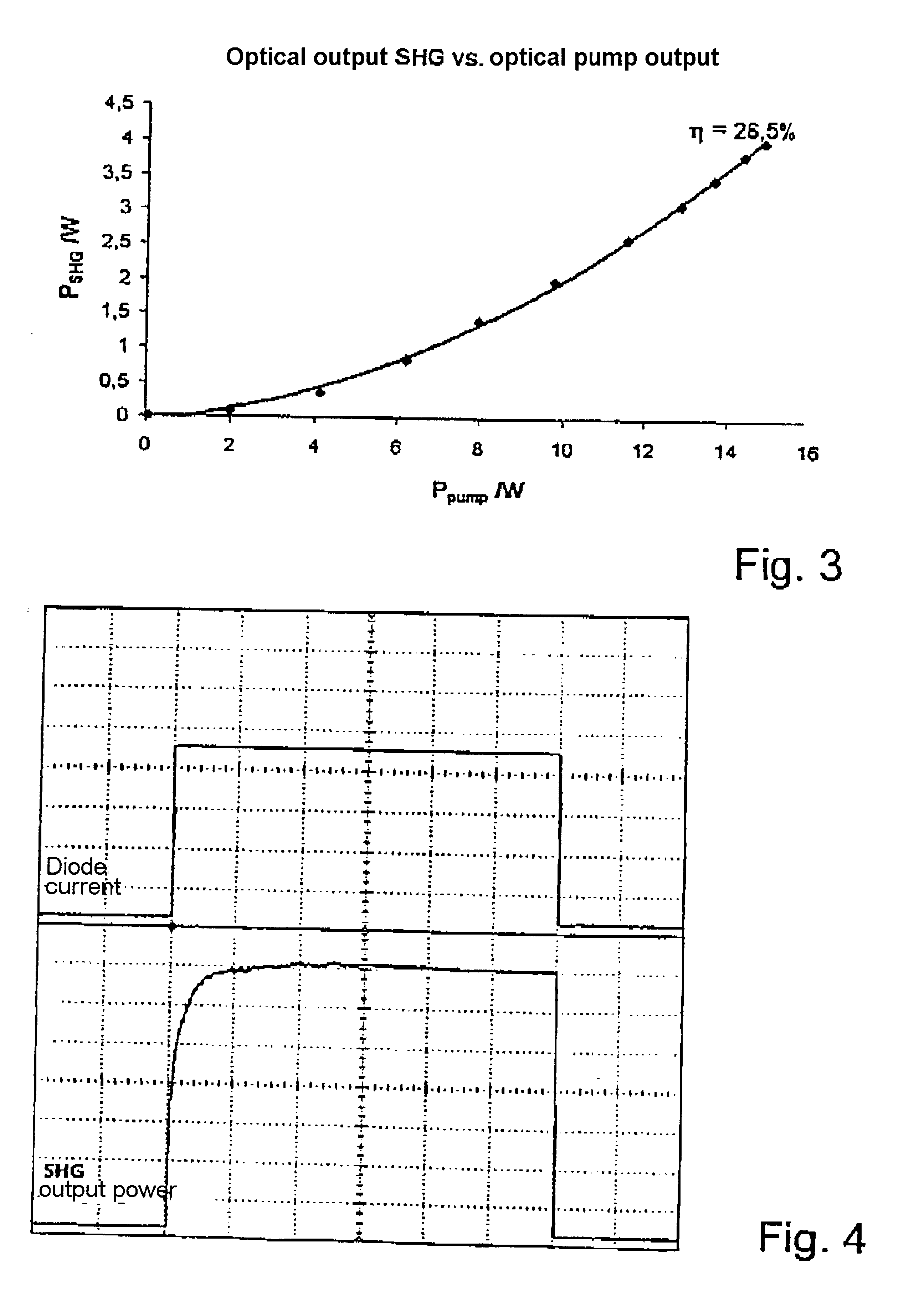Intracavity frequency-doubled diode-pumped laser
- Summary
- Abstract
- Description
- Claims
- Application Information
AI Technical Summary
Benefits of technology
Problems solved by technology
Method used
Image
Examples
Embodiment Construction
The laser construction shown in FIG. 1 contains, as active medium in the cavity, an Nd:YVO.sub.4 laser crystal 1 formed as a laser crystal disk; the smallest of its dimensions (0.4 mm.times.4 mm.times.4 mm) being 0.4 mm in the direction of the cavity axis X.sub.1 --X.sub.1. The laser crystal disk is fastened by its large-area side facing away from the interior of the cavity to a cooling element (not shown) which serves to generate a temperature gradient in the solid state medium that is directed predominantly parallel to the cavity axis X.sub.1 --X.sub.1. The only intracavity element, serving as frequency multiplier element, is a nonlinear optical crystal 2 in the form of a KTP crystal with type II critical angle phase matching, whose dimensions are 2 mm.times.3 mm.times.3 mm. In order to reduce losses, the surfaces in each of the crystals 1 and 2 impinged on by the laser radiation work parallel to one another and at right angles to the cavity axis X.sub.1 --X.sub.1.
The shortest dim...
PUM
 Login to View More
Login to View More Abstract
Description
Claims
Application Information
 Login to View More
Login to View More - R&D
- Intellectual Property
- Life Sciences
- Materials
- Tech Scout
- Unparalleled Data Quality
- Higher Quality Content
- 60% Fewer Hallucinations
Browse by: Latest US Patents, China's latest patents, Technical Efficacy Thesaurus, Application Domain, Technology Topic, Popular Technical Reports.
© 2025 PatSnap. All rights reserved.Legal|Privacy policy|Modern Slavery Act Transparency Statement|Sitemap|About US| Contact US: help@patsnap.com



